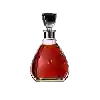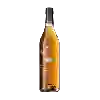
Winery Piétri GéraudHors d'Age Banyuls
This wine generally goes well with beef and spicy food.
Food and wine pairings with Hors d'Age Banyuls
Pairings that work perfectly with Hors d'Age Banyuls
Original food and wine pairings with Hors d'Age Banyuls
The Hors d'Age Banyuls of Winery Piétri Géraud matches generally quite well with dishes of mature and hard cheese, blue cheese or aperitif such as recipes of savoyard fondue, veal chops with roquefort sauce or tuna spread.
Details and technical informations about Winery Piétri Géraud's Hors d'Age Banyuls.
Discover the grape variety: Sultanine
Most certainly finding its first origins in Persia, today Iran. It is registered in the Official Catalogue of table grape varieties list A1. Note that the variety gora chirine, also finding its first origins in Iran (Azerbaijan), is a mutation of the Sultanine, its berries of white or pink color being slightly larger.
Informations about the Winery Piétri Géraud
The Winery Piétri Géraud is one of of the world's great estates. It offers 23 wines for sale in the of Banyuls to come and discover on site or to buy online.
The wine region of Banyuls
Banyuls wines come from the South-eastern Part of Roussillon, in the south of France, in the lower Pyrenees, a few kilometres from the Spanish border. These naturally Sweet wines are consumed both as an aperitif and as a dessert. They come in a wide range of hues, from GoldenGreen (Banyuls Blanc) to Amber (Banyuls Ambré) to the intense garnet of the standard Banyuls Rouge. Unusually among the natural sweet wines of France, all Banyuls wines are made primarily from Grenache grapes of various colors.
The wine region of Languedoc-Roussillon
Languedoc (formerly Coteaux du Languedoc) is a key appellation used in the Languedoc-Roussillon wine region of southern France. It covers Dry table wines of all three colors (red, white and rosé) from the entire region, but leaves Sweet and Sparkling wines to other more specialized appellations. About 75% of all Languedoc wines are red, with the remaining 25% split roughly down the middle between whites and rosés. The appellation covers most of the Languedoc region and almost a third of all the vineyards in France.
The word of the wine: Ice wine
Sweet wine obtained by pressing frozen berries harvested in the middle of winter.














